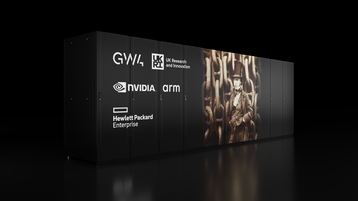The UK’s Isambard 2 supercomputer is set to retire after six years of service.
According to the Great Western 4 (GW4) Alliance – a group comprising the universities of Bath, Bristol, Cardiff, and Exeter – the system’s service will end today (September 30).
Named after Isambard Kingdom Brunel, the famous British civil engineer, the supercomputer was jointly launched by GW4, Cray, and the UK Met Office in May 2018.
At launch, the system was one of the world’s first Arm-based supercomputers. The Cray XC50 system was comprised of 20,992 cores, 64-bit ARMv8-A Marvell ThunderX2 processors, and Nvidia P100 GPUs.
Writing on X/Twitter, Professor Simon McIntosh-Smith, head of the Microelectronics Group at the University of Bristol, leading the project, wrote: "After six years of service the Isambard 2 supercomputer is finally being retired! Starting in May 2018, Isambard was the world's first production Arm-based supercomputer, employing ThunderX2 CPUs. Isambard 3 takes over today using Nvidia Grace Arm-based CPUs provided by HPE.”
In 2023, GW4 announced it had been awarded £10 million ($13.39m) in funding from the UK Research and Innovation (UKRI) to develop the Isambard 3 supercomputer. In a statement at the time, the group said the system would “enable new research in a wide range of areas,” have six times more computational performance, and be six times more energy efficient than Isambard 2.
Isambard 3 has since been used to support the UK’s Isambard-AI cluster, the first phase of which was launched in March 2024. Although the AI supercomputer’s current 7.42 petaflops of compute performance meant it did not make the most recent edition of the Top500 list of the world’s most powerful supercomputers, it did rank second on the Green500 list of most energy efficient systems.
At full capacity, the Cray EX-based Isambard-AI is expected to feature 5,448 Nvidia GH200 superchips and offer 200 petaflops Linpack and 21 exaflops of AI compute. The machine will also incorporate HPE Slingshot 11 interconnect, and nearly 25 petabytes of storage using the Cray Clusterstor E1000.
It is housed in a self-cooled, self-contained HPE Performance Optimized Data Center (POD) at the National Composites Centre on the Bristol and Bath Science Park.
Earlier this month, Oak Ridge National Laboratory announced it would retire its 148.6 petaflops Summit supercomputer in November 2024.
DCD also exclusively reported that GENCI, the French national HPC agency, is set to retire its Joliot-Curie supercomputer once its Alice Recoque exascale machine comes online.






